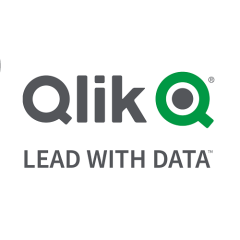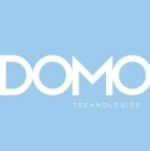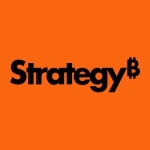
BI Expert with 501-1,000 employees
Real-time Data Collaboration
Yesterday, I had a very nice meeting with the folks at Qlikview (thanks, @DHurd11 & Andy for making the trip). They partnered with a local DC consulting firm by the name of Tandem Conglomerate. I had the pleasure of working with Ben Nah from Tandem Conglomerate last year – and I can vouch that their talent is top-notch. Qlikview is smart to find partners of this caliber – and utilize them to better serve their customers.
As a technologist, I always have my eyes open to exploring new technology. This is always challenging with long term contracts, university politics, and an ever-changing IT landscape. However, for me, vendors have to prove why they should remain at the top. Competition is healthy for everyone as it makes us constantly improve. I should also say that as long as we have a defined data model, the reporting tools that we use on top of that data model are fluid. The point is not to constantly change and rip out what you’ve done just for the sake of redoing it, but it is important to keep an eye on the latest technology, experiment, and find what is best for your organization. This can be done gradually with small pilot projects to prove value. We’re actually in the process of doing one of these pilot projects with Hadoop.
Ok – so you’re probably wondering why I titled this post ‘real-time data collaboration’? During the Qlikview presentation yesterday, I saw something that really resonated with me. And, that was the ability to collaborate, in real-time, on the same Qlikview dashboard.
This capability is a market differentiator for Qlikview. As many of you may have seen from Gartner and in my previous post regarding Gartner’s Magic Quadrant for BI, this is one of the reasons that Qlikview remains ahead of competitors such as Tableau. Other dashboard vendors may provide the ability to ‘share’ with others, or embed the dashboard into a web page or part. Don’t misunderstand. This is NOT the same.
During their product demonstration, Qlikview demonstrated the ability in real-time to share dashboards. This means that you can select the filters/parameters that you would like to analyze, hone in on the particular area of interest, and share it in real-time. The recipient can then see that selection, modify it, and as they modify the shared dashboard, it will update your dashboard. You can modify and send changes back to the recipient as well. VERY COOL! Kudos to Qlikview on this feature.
Disclosure: My company does not have a business relationship with this vendor other than being a customer.
Industry Analyst with 51-200 employees
The future of BI in two words
Disclosure: I am an industry analyst focused on self-service business intelligence and data analysts. QlikView and Tableau user. Current clients include QlikView, Spotfire, and Tableau.
What’s the future of BI? Last fall, one sharp source of mine answered, “Two words: Tableau and QlikView. You didn’t hear it here.”
Those are startling words coming from that source, a well-regarded BI consultant known for big-name clients and their big deployments.
At about the same time, a column of mine appeared in Information Management titled “Don’t call it BI” — in which I mentioned Tableau and a few smaller tools. A reader emailed, “You should also become familiar with QlikView.”
My many Tableau-using friends say QlikView is hardly worth a look. Poor visualization! Control panels! Scripting! “It’s so — yesterday,” one emails.
It’s “yesterday” to some yet it’s the future to others. It’s time for a look.
Both Tableau and QlikView promise the same magic: Listen to one pitch and you might think that you’re listening to the other. Each sets itself up against traditional, big-iron BI. Each claims to empower business users by giving them all the data and control they need for free discovery. Each is easy to use. Go inside each tent, though, and you see how different they are.
Metaphorically speaking, Tableau is West Coast. It’s built for discovery by the individual. Just show up and ride on the breeze, the demos seem to say, free as a seed fairy on a meadow. The inevitable mistakes of discovery are quickly undone and forgotten. Create the most dazzling visualizations — “vizzes” — thanks to built-in best practices that nudge you toward beauty and punch.
One of the most attractive aspects is users’ effervescence. They seem to be riding on the wind and solving business problems all at once. Their rapture sweeps me away every time I’m near it.
If Tableau is West Coast, QlikView is East Coast. Its community is bigger, the third-party add-ons are more plentiful, support seems more available, and overall workflow feels more structured. It too is built for discovery, but it’s discovery rooted in community. The “associative experience” reveals relevant data, and you can create your own views and in quick succession ask any questions, anticipated or not. But unless you’re working alone, someone else probably defined the data and its structure for you. This is QlikView’s counterpart to Tableau’s meadow, though it’s more like a manicured garden than Tableau’s unfenced field of daisies.
QlikView’s boundaries may be more apparent than Tableau’s, but I suspect that there’s at least as much power there. I just haven’t yet been able to judge it for myself well enough.
The trouble for me is that I’ve used it alone, as if stuck in a remote cabin. Though even Thoreau might have liked the “associative experience,” QlikView really comes alive only when you link to others.
As in Tableau, any QlikView user can create or modify a workspace, a document linked to one or more sets of data with any number of displays. Unlike Tableau, QlikView isn’t so finicky about data; for one thing, linking to Excel spreadsheets is easier.
I can’t speak with assurance just yet on the differences between QlikView and Tableau Server — more on that later — though I think I see a QlikView edge there.
One other advantage for QlikView is clear: built-in collaboration. True, Tableau workbooks can be passed around in a variety of ways forever. But as with our atomized life on the West Coast, such a community would be for me, the hypothetical manager of a group, too loose for comfort.
Tableau users will shudder, as if about to be extradited back to Maine. “Great, central authority all over again,” they would say. Yet when I imagine myself managing a group, I would feel disabled without a tight, integrated social structure.
“It’s the soft stuff that matters,” TechTarget research director Wayne Eckerson likes to say. Such stuff is what interests me more than anything: Who are these people and how did they choose what they did?
Have most Qlik or Tableau users chosen their tool the way most of us choose spouses, religion, and politics — guided by our relationships? How many software shoppers qualified their candidates with lists of requirements and features and followed through based on evidence? Did they do what a veteran sales person at a large BI vendor sees?: “They gather requirements, they issue RFPs, they visit trade shows, they talk to vendors, and ultimately they pick one because they like its color.”
I think it’s usually about “color,” color being the cover story for something most people can’t quite describe. For now, though, I’m happy to say that at least my first question has been answered: Yes, QlikView belonged on that list in “Don’t call it BI.”
Disclosure: My company does not have a business relationship with this vendor other than being a customer.
Buyer's Guide
QlikView
September 2025
Learn what your peers think about QlikView. Get advice and tips from experienced pros sharing their opinions. Updated: September 2025.
869,785 professionals have used our research since 2012.
VP of IT at a manufacturing company with 1,001-5,000 employees
Our support has been excellent, but is provided by a 3rd party consultant group
What is most valuable?
Ability to quickly deploy dashboards with multiple data sources.
How has it helped my organization?
We have enable a user self service reporting capability support minimally by IT for linking and sourcing of data.
What needs improvement?
Map capability without add ins and extra cost.
For how long have I used the solution?
We have used this product for about 2 years
What do I think about the scalability of the solution?
No, product has proven to be scalable. You need to consider at least mid term scale before deciding which license types to purchase, I would recommend Server versions with session cals, vs. Document cals.
How are customer service and technical support?
Our support has been excellent, but is provided by a 3rd party consultant group.
Which solution did I use previously and why did I switch?
No we did not have a dashboarding tool other than using MS Products such as Excel.
What about the implementation team?
We used a combination of both internal and external resources. We used DI Squared, they have been excellent to work with and have more than adequate capabilities and expertise.
What other advice do I have?
Go for it. I might consider waiting for latest release version to come out before comparing other products. There may be some excellent additions to functionality. Plan out your environment, plan out the data modeling process. Spend time on governance of the processes that support the user self service capabilities. Although end users can use the product easily, they may need help with data procurement. Think about security of your data before turning everyone loose.
Disclosure: My company does not have a business relationship with this vendor other than being a customer.
Consultant at a wholesaler/distributor with 51-200 employees
Once you see what it can do, you will want it
Pros:
Speed
Flexibility
User Friendly
Associated Search
In Memory
Cons:
Reporting is quite difficult to get right, but if you spend you will get it right
Disclosure: My company does not have a business relationship with this vendor other than being a customer.
Consultant at a wholesaler/distributor with 51-200 employees
I left my Job of 15 years to...
I left my Job of 15 years to work with Qlikview full time, that alone will tell you what I think of it, a full review to follow
Disclosure: My company does not have a business relationship with this vendor other than being a customer.
Consultant at a financial services firm with 10,001+ employees
QlikView vs Tableau
As promised in my last “first look” review, I’m taking Qlikview 10 for a spin. For those of you not familiar with Qlikview it’s a data visualization tool that’s designed to make the creation of ad-hoc reports and dashboards, from existing data, quick and simple.
Installation
Getting hold of Qlikview is a matter of registering on their web site and downloading the “personal” edition. The personal edition has the limitation of not being able to share your Qlikview files with any other users, but doesn’t appear to have any other time or functionality restrictions.
You will probably want to download the tutorial. This is made up of some sample files and a PDF tutorial. Whilst a PDF feels a bit “old school” however it is clearly written and progressive, making it pretty easy to follow.
Interface

The interface is very “Office 2003”. Not a bad thing, in that most of the icons are pretty easy to figure out, but it does feel quite dated (Qlikview 11 is being trumpeted on their blog – so this may be remedied soon). The workspace is also pretty bare until you start adding some data. There’s not too much clutter though and most Windows follow sensible conventions (right click on an object for properties etc.)

Properties window. Lots there, but fairly accessible
Applying the “man test”
Being a vain middle aged man I prefer not to read tutorials and instructions. The “man test” is very subjective, and in this case I did resort to reading the tutorial (whereas with Tableau I was compelled by child-like curiosity to cobble something together without instructions). This isn’t to say that Qlikview isn’t intuitive – it’s really very good, but it’s not quite as visual and inviting as apps such as Tableau.
Features that really stood out
Qlikview seems to bring the data to the fore. Your start point is very much the fields that make up the database and you then add charts onto this. One of Qlikview's specialities – they call it the Associative Engine – seems to be the ability to filter all linked fields in other tables when selecting any field in any table. It grays out not applicable data and highlights linked data in white – so you understand the associative relationship (or not) between datasets.
I think I’d need to use this tool in anger on my own data set to really understand the benefits of this approach, but it seems logical and intuitive – all good.
Dashboards are quick and easy to create, at least as simple as Tableau – they are both drag-and-drop efforts. Qlikview makes it fractionally easier to tweak the look and feel of objects.
Tables are easy to create and to drop into dashboards. Interactivity on tables and charts is excellent, allowing you to reselect data and ranges on the fly.
Things I didn’t like
This type of tool is all about delivering insight from your data. This inevitably includes charts. Working through the tutorial I was very disappointed by the standard of charts shown. Now it may well be possible to tweak these graphs to follow better practice, but frankly we shouldn’t have to. Having charts like this:
 …is unacceptable. It shows a real lack of understanding of how to present information and you wonder how much of this attitude spills into the design of other templates and software features. The 3d pie chart…
…is unacceptable. It shows a real lack of understanding of how to present information and you wonder how much of this attitude spills into the design of other templates and software features. The 3d pie chart…

.. had me biting lumps out of the carpet – but perhaps it’s just me (see this rant about pie charts for the background of my loathing). By the time I got to mock-gauges…
…I was inconsolable. Tableau can do “proper” charts, with minimal clutter, careful use of colour and good layout – Qlikview, you can do better.
One of Qlikview's selling points is that it’s “in-memory”, so it should be able to execute analysis very swiftly. However, the Gartner report from 2011 on BI tools indicates that customers are not particularly stunned by the overall speed of Qlikview and I have concerns over server memory usage – a query I still have open with Qlikview sales (i.e. what happens when you exceed the available memory with your requirements).
Sharing
There are lots of ways to share your output:
- Over the intra/internet
- To a dedicated client app on your PC
- To mobile phones/tablets (iOS, Blackberry and Android supported)
- Export to Excel
Pretty much every method you could hope for, save carrier pigeon.
Verdict
I like the ease of use of Qlikview. I was very under-whelmed by it’s charting ability- it feels like the defaults and the tutorial regard graphic representation as an afterthought – this was backed up by their sales person commenting on the “pretty graphs” of their rival – Qlikview – you just don’t seem to get it! The company are making great play of the way it handles data, and specifically the relationship between that data, so I think it merits some further investigation. Watch this space for some longer-term road testing and a more in-depth review.
Disclosure: My company does not have a business relationship with this vendor other than being a customer.
Hello,
I believe QlickSense has addressed most of the charting challenges listed above and most recently just announced the capabilities to be able to export to PDF or PowerPoint and print the story/charts. Very intriguing product in deed.
VP of IT at a manufacturing company with 1,001-5,000 employees
Flexible, quick access, but need to spend time designing the Data Warehouse.
Valuable Features:
Flexible, quick access by end users, can promote user self service reporting
Room for Improvement:
Still need to spend time designing the Data Warehouse behind this tool to facilitate user self service model.
Disclosure: My company does not have a business relationship with this vendor other than being a customer.
QlikView can be used with or without data warehousing. This is enabled by the fact that this BI tool stores data in memory rather than disks. This in turn facilitates the rate of accessing the stored data. The fact that there exists various memory capacities allow data of different sizes to be stored while QlikView is in use.
Project Manager at a computer software company with 51-200 employees
QlikView is a highly effective management tool, allowing a broad area of analysis.
Valuable Features:
QlikView is based on a different technology from OLAP technology. Called AQL ™ (Associative Query Logic), this technology has been patented since 1994.
If there is no need rethinking QlikView OLAP cubes, development and implementation of new elements, reconfiguring the graphical interface. Also, working with databases is much more flexible. Thus reducing the time and that the costs of implementing new analysis / reports.
QlikView is easy to use, letting you easily analyze large volumes of data! Interactive graphical interface to predominantly assures unquestionable advantage over other applications. From a few clicks you can find any information in your database, no matter how "hidden" or detailed as!
QlikView is a highly effective management tool, allowing a broad area of analysis. Virtually any existing information in the database the company can be valued by this application, stimulating her performance in an integrated context.
• Qlikview has its own ETL engine built-in
• You can analyze millions of data - QlikView is easy to use, letting you easily analyze large volumes of data!
• Time to implement - Any user / manager can define its own set of analyzes
• Partner Network – Qlikview has more than 1000 partners world wide
• Development - Qlikview has Scripting
• 64-bit in-RAM DB - Qlikview is faster than Tableau
• QlikView is based on a different technology from OLAP technology. Called AQL ™ (Associative Query Logic), this technology has been patented since 1994.
• Interactive graphical interface - Extremely intuitive interface (requires almost no training);
Room for Improvement:
QlikView should give you just that: gather, provide access to, and analyze data and information about their company operations
So, QlikView has little success by itself, so we have to go with: ERP, CRM, or some planning and estimation solutions (this would take what-if scenarios) which means other costs besides the costs of implementing QlikView
This is why QlikView offers the possibility to perform what-if scenarios.
• QlikView has little success by itself, so we have to go with: ERP, CRM, or some planning and estimation solutions (this would take what-if scenarios) which means other costs besides the costs of implementing QlikView
• QlikView can display better analysis but it takes more skill and time to develop/design than with Tableau.
• Qlikview it is stronger than Tableau for reporting only, but it requires more training and is less intuitive than Tableau
• You have to employ IT specialist
• It is limited by RAM, so Qlikview is not very scalable
I chose QlikView specialization rather than other BI solution available on the market due to the advantages this technology offers:- Good price compared to other solutions;
- Flexible licensing system (but not complicated and consists of dozens of modules that other solutions);
- Very little development time;
- Easy maintenance;
- Ability to provide Business Intelligence Off-The-Shelf.
- In QlikView, you can develop yourself analyzes you need in just minutes
Disclosure: My company does not have a business relationship with this vendor other than being a customer.
While development of dashboards may take a bit longer than other solutions QlikView is very intuitive to regular users who need to explore the data in a true interactive analytical fashion .
Buyer's Guide
Download our free QlikView Report and get advice and tips from experienced pros
sharing their opinions.
Updated: September 2025
Popular Comparisons
Microsoft Power BI
Tableau Enterprise
IBM Cognos
Domo
Qlik Sense
Oracle OBIEE
Zendesk
MicroStrategy
Looker
ThoughtSpot
Looker Studio
Microsoft SQL Server Reporting Services
Sisense
SAP Crystal Reports
TIBCO Jaspersoft
Buyer's Guide
Download our free QlikView Report and get advice and tips from experienced pros
sharing their opinions.
Quick Links
Learn More: Questions:
- QlikView or Tableau - Which is better?
- Ad Hoc Reporting: QlikView vs. MainFrame Focus
- What's your experience or opinion about Spotfire vs. Tableau vs. Qlik?
- I currently use Panorama Necto as a viewer on SQL Analysis services cube--what other solutions are out there?
- Which is a better for reporting, SAP BO or QlikView?
- Spotfire vs. QlikView. What can one do which the other cannot?
- Tableau vs. QlikView - functionality and pricing schemes
- A journalist is writing a story about which Data Visualization software product to choose. Can you help him?
- A recent user: "I've done some primitive comparisons between Tableau, QlikView and PowView." Have you compared these?
- Does QlikView support my requirements?















To what underlying database(s) were you connecting?